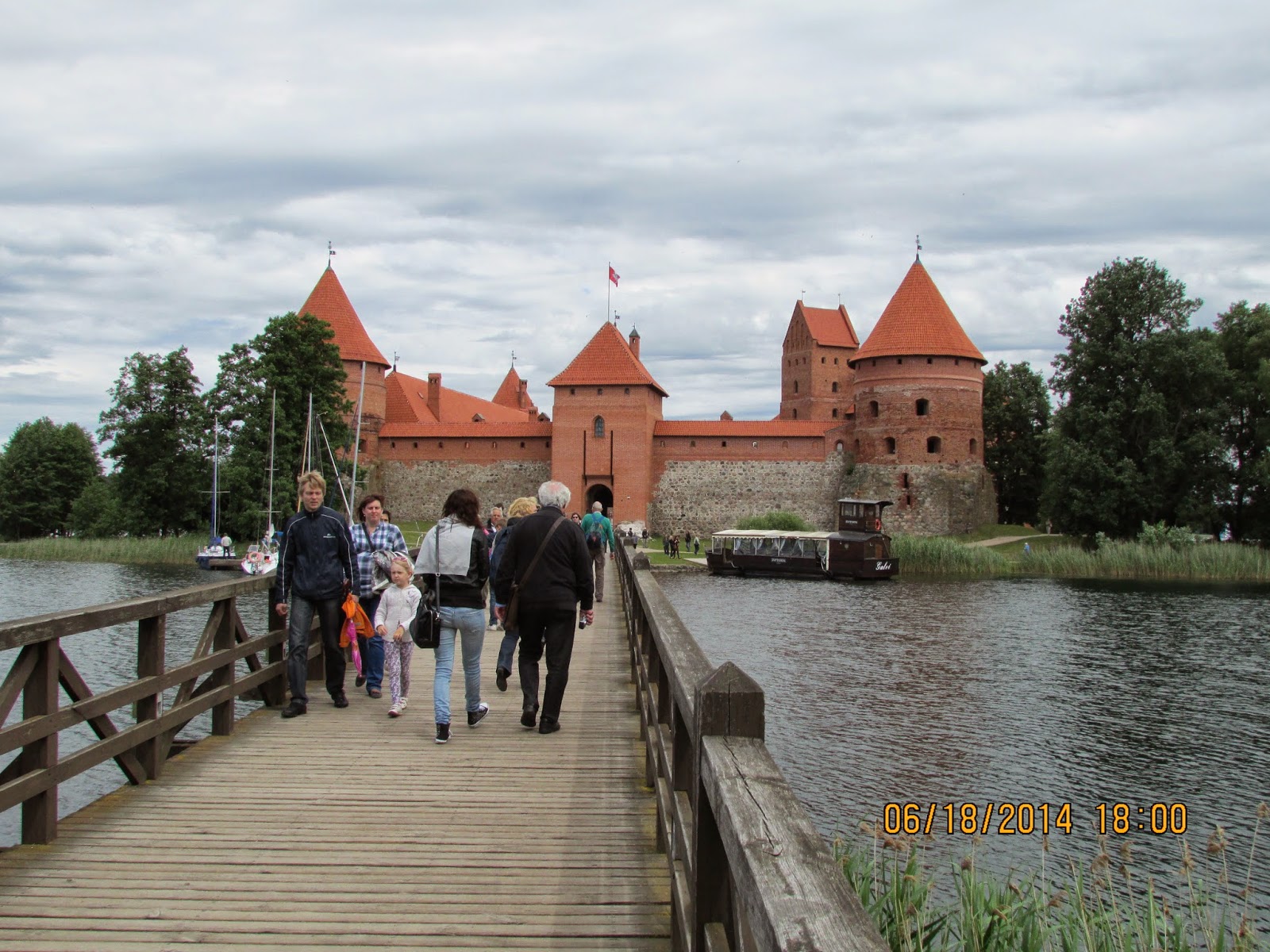The capital of Lithuania is Vilnius. But between the two world wars of the twentieth century, the capital was Kaunas. During the medieval fluorescence of Lithuania, the capital was Trakai, which is about 30 kilometers from Vilnius. Trakai was a fourteenth-century castle with the usual accoutrements; it is situated on an island in a chain of lakes. For me the most interesting thing about Trakai is the role of the Karaites in the history of the medieval Lithuanian state.
This is what our Lonely Planet guide has to say about the Karaites:
The peaceful ruins of Trakai's Peninsula Castle, built from 1362 to 1382 by Kestutis and destroyed in the 17th century, are a little south of the island castle.... The peninsula itself is dotted with old wooden cottages, many built by the Karaites, a Judaic sect and Turkic minority originating in Baghdad, which adheres to the Law of Moses. Their descendants were brought to Trakai from the Crimea in around 1400 to serve as bodyguards. Only 12 families (60 Karaites) live in Trakai and their numbers--280 in Lithuania--are dwindling, prompting fears that the country's smallest ethnic minority is dying out.... Their beautifully restored early-19th-century Kenessa can be visited but there are not set opening times.Luckily for the Karaites, it seems that their Turkic ethnicity trumped their Judaism, which is why they were exempted from the Holocaust. Here are the Knessa (next photo, below) and some of the houses (underneath that) they built in Trakai.
Before Trakai, in the dim recesses of the Lithuanian past, the capital was Kernave, the remains of which are largely archaeological.
Both Kernave and Trakai are UNESCO World Heritage sites. We spent yesterday in Trakai; here are the photos.









The architecture is a curious mixture of Germanic and Scandinavian influences (not always separate, of course). Fascinating site!
ReplyDeleteI saw the same thing in Finland. Thanks, David!
ReplyDelete